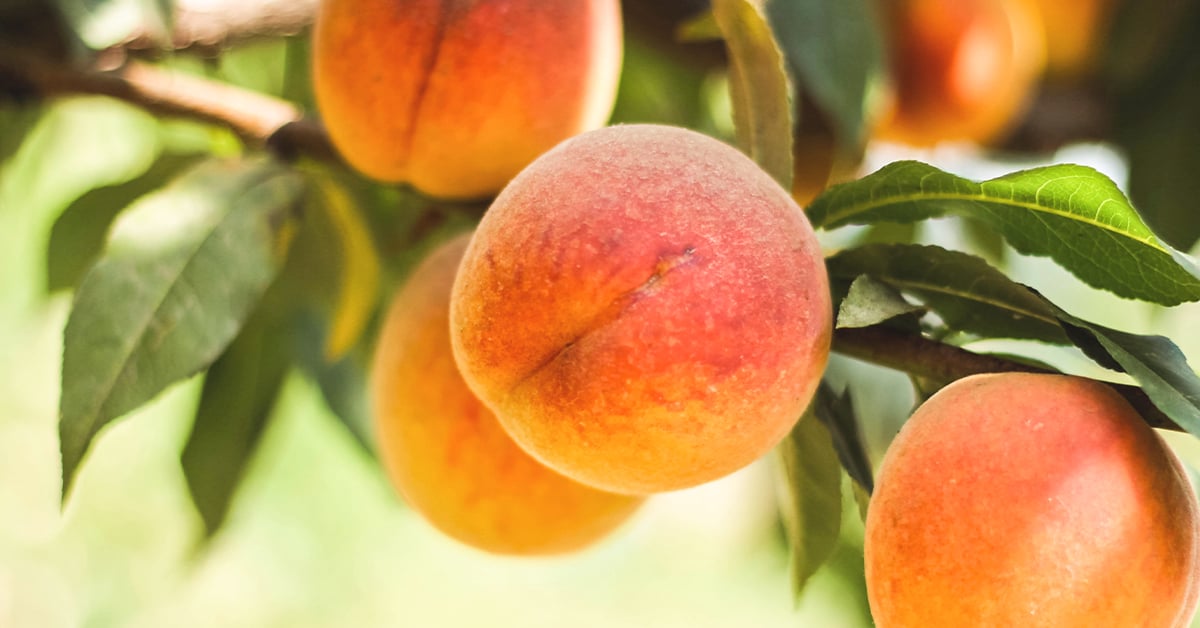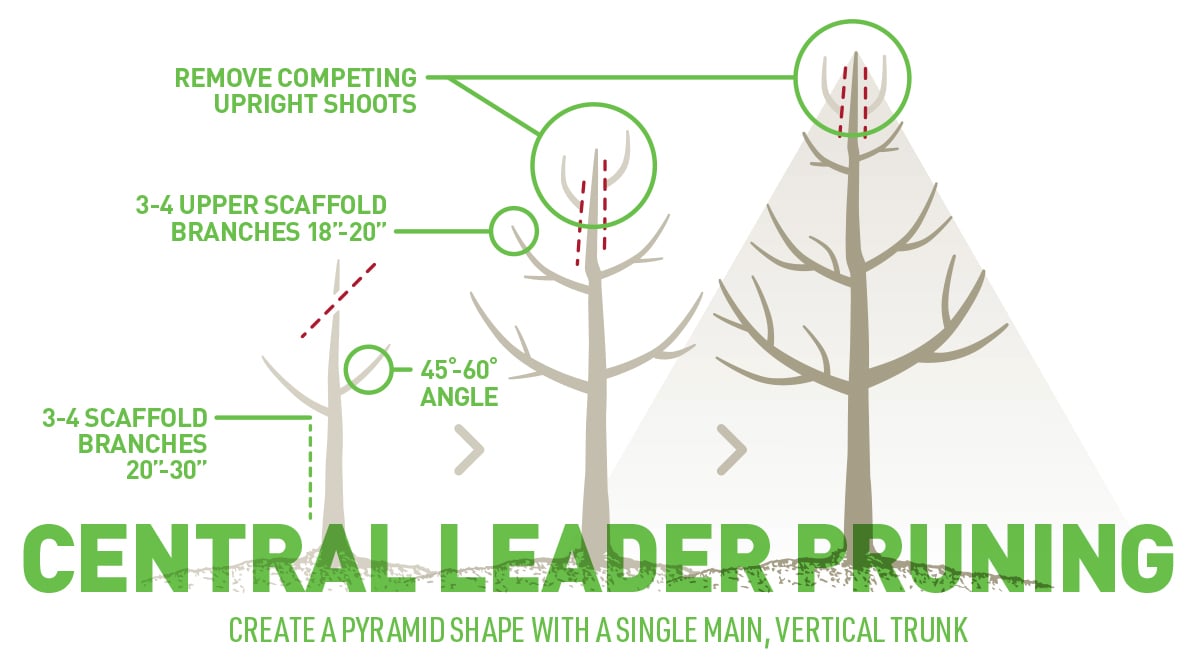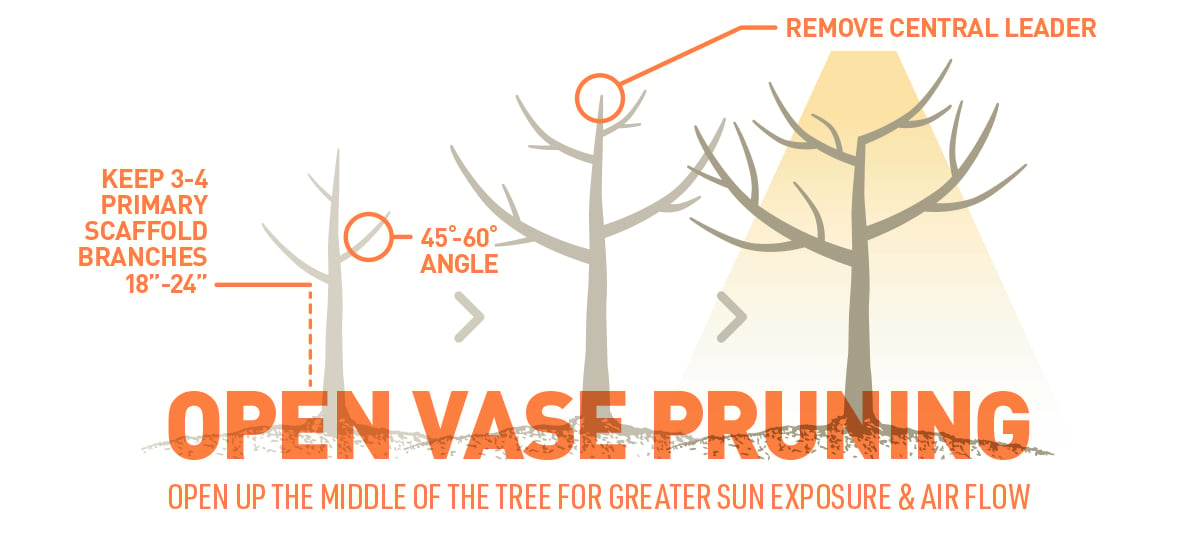
Take a moment to remember the last time you enjoyed a juicy peach, relished some freshly-made apricot jam, or indulged in a slice of warm apple pie. We truly cherish these treats and the many other fruits that flourish in abundance across the Intermountain West. It's tough to picture life without them, isn't it?
One key to preserving these delicious traditions is maintaining the health and productivity of the fruit trees in your own backyard through proper pruning methods. Pruning will improve the overall health and growth of your fruit tree. Take a look at your tree's structure each year, and you'll enjoy many more years of fruitful harvests.
When to Start Pruning Your Fruit Trees
The ideal time to prune your fruit trees is in the late winter and early spring before bud-break, bloom and leaf emergence. This is when the trees are dormant, which reduces stress and allow cuts to heal or harden off. No foliage makes pruning easier. There may be rare occasions when it’s necessary to prune in the summer, for instance if you need to open a canopy for greater light penetration.
Thin overgrow fruit trees so they can produce more energy
Thinning overgrown trees to remove dead or unhealthy limbs/branches to allow for better light infiltration is one of several reasons to prune your fruit trees. The more leaves exposed to good light, the more energy that is produced. Thinning the limbs also helps produce fruit with less bruising and scarring.
Pruning encourages strong, thick branches
Pruning controls the height of a tree and the size of the branches. Three or four main branches with smaller limbs will carry fruit better than long, thin branches and improves weight distribution on your fruit tree.
Shape the tree for easier picking
Pruning makes it possible for you to shape the tree. You can decide the height of the branches for picking fruit and/or how low to the ground they are for mowing around them.
How to Prune Different Fruit Trees
Although fruit trees are generally pruned to a height comfortable for picking, it’s important to understand that each species or type of fruit tree should be pruned differently.
Apple, Pear & Other Pome Fruit Trees
Fruit trees that produce “pome fruits,” including apples and pears, have a core of several small seeds surrounded by a tough membrane.

"Central Leader" Pruning Style
For these types of fruit trees, we recommend the “central leader” style of pruning, which creates a sort of pyramid shape with a strong center. To do this, preserve a single main, vertical trunk by removing competing upright shoots. Select and prune around three or four scaffold branches about 20-30 inches up from the ground with three or four upper scaffold branches about 18-20 inches above the first set. All the scaffold branches should be angled about 45-60 degrees from the trunk.

Encourage Horizontal Branches for Better Fruit Development
Apples and pears both develop better fruit on horizontal branches. Keep in mind, fruiting buds on apple and pear trees produce more fruit on terminal buds or buds at the end of a branch or spur, so take care to preserve as many of these buds as possible when pruning. Apples and pears produce fruit on 2-year-old branches/spurs.
Peach, Cherry & Other Stone Fruit Trees
Stone fruits, including peaches, nectarines, apricots, cherries and plums, have large, hard pit or “stone” in its fruit.

"Open Vase" Pruning Shape
The proper pruning method for peaches, apricots and other stone fruits is "open vase" pruning, which means opening up the middle of the tree to allow for greater light and air flow in the center.
This method involves having three or four main scaffold branches evenly spaced around the trunk about 18–24 inches up from the ground, angled 45 to 60 degrees from the trunk. Prune off 50–80% of last year’s growth to stimulate new growth for future production. Remove all suckers, shoots coming from the roots and/or stems below the graft on a regular basis.

Peach and Apricot Trees
Fruiting buds on peach and apricot trees only occur on the second year of growth on branches. Prune out about 50 percent of the branches that produced last year and leave enough new growth for the fruit to bloom.
Pay attention to the weight distribution. Cutting that much of the tree out will stimulate new growth for next year’s production and pruning.
Sweet and Tart Cherry Trees
Sweet cherry trees grow tall at a fast rate and tart cherry trees naturally stay smaller. With sweet cherries, skip a single year of pruning in the open vase style.
Fruiting buds occur on older wood in spurs, small but noticeable clusters of buds that produce flowers. Both sweet and tart varieties of cherries are grown in our region, and are enjoyed fresh off the tree, in mouthwatering pies, and much more.
Plum Trees
Whether new or established, plum trees need annual pruning in an open vase style. As the tree fills out with new growth, continue to prune to form a canopy.
Grow and Enjoy More
After pruning, give your trees a thorough watering to help them being their recovery quickly. It’s also a good idea to fertilize the tree so it has extra energy to naturally close the pruning wounds and reduce stress on the tree. Be sure to dispose of all removed branches. It’s important to burn or take away any wood that appears diseased or had past problems.
The better you get at pruning your fruit tree's branches, the more likely you will enjoy bigger, sweeter fruit, even on lighter production years. When all the work is done, may you relish the fruits of your labor and let us know how we can offer greater service whether you’re planting, pruning or preserving.
Additional Resources
For more up-to-date information on all fruit crops grown in the Intermountain region, along with details on disease, pest control, spray chemicals and other resources, the USU Extension “Intermountain Commercial Tree Fruit Production Guide” is available at www.intermountainfruit.org.
Information for this article was provided by Todd Tolbert, CCA, Spanish Fork IFA Ag Center; Aaron Jaussi, Branch Manager, Provo IFA Country Store; Nick Loveland, Certified Arborist, Assistant Manager, Ogden IFA Country Store; and Kent Mickelsen, Utah Certified Nurseryman, IFA Country Store.









